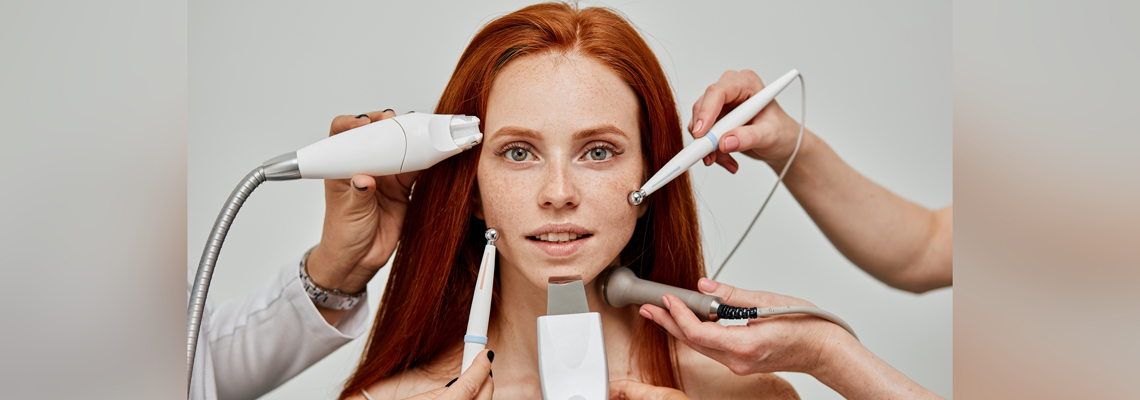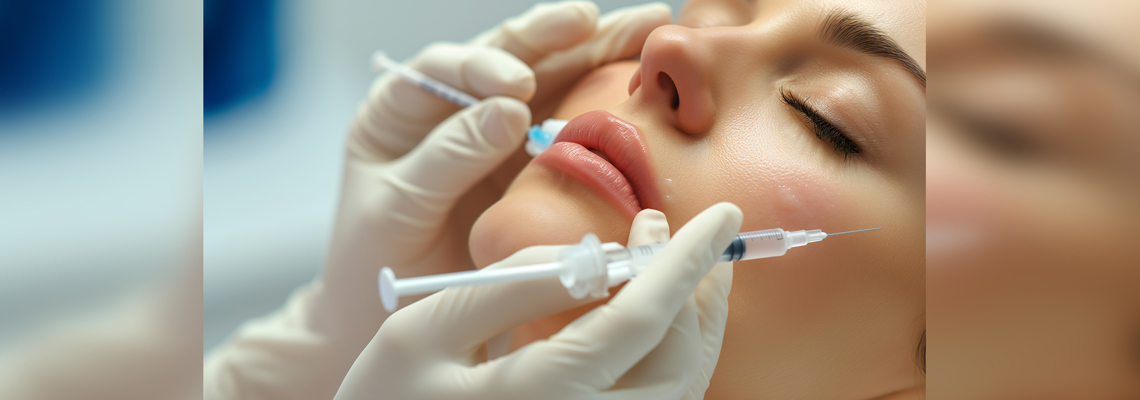How Has Medical Esthetics Transformed Over the Decades?
From the milk and honey baths favored by ancient Egyptians to the cutting-edge cosmetic lasers of today, the quest for a youthful, healthy, and appealing appearance is a timeless endeavor. Modern advancements in high-tech cosmetic treatments fulfill these desires by offering solutions that bypass the extensive time, cost, and risks of surgical procedures. Medical esthetics, the fusion of healthcare and beauty, has evolved dramatically over the past few decades. This field, which includes procedures like Botox, dermal fillers, laser treatments, and surgical enhancements, has grown from a niche market into a mainstream industry. With advancements in technology, changing societal norms, and a growing desire for non-invasive beauty solutions, medical esthetics has revolutionized the beauty industry, becoming a significant revenue stream for estheticians, cosmetologists, and other skincare experts. These transformations have reshaped how we perceive and achieve beauty, making it more accessible and diverse.
Early Beginnings and Historical Context
The quest for beauty is not a modern phenomenon. Ancient civilizations, including the Egyptians, Greeks, and Romans, experimented with various natural substances to enhance their appearance. Cleopatra's use of milk baths and kohl eyeliner and Roman women's use of lead-based makeup are early examples of esthetic practices. These methods, though rudimentary, laid the foundation for the evolving field of esthetics.
The modern era of medical esthetics began in the early 20th century. In 1901, German physician Dr. Erich Lexer performed the first documented facelift. In the 1920s and 1930s, surgeons adapted reconstructive surgery techniques developed during World War I for cosmetic purposes. The post-war era saw a surge in demand for cosmetic surgery as people sought to restore their pre-war appearance or correct congenital disabilities.
The 1960s to 1980s: The Rise of Plastic Surgery
The 1960s marked a significant milestone with the introduction of silicone breast implants by American plastic surgeons Dr. Frank Gerow and Dr. Thomas Cronin. This innovation revolutionized the field of esthetic surgery, offering women new possibilities for enhancing their physical appearance. Breast augmentation became one of the most popular cosmetic procedures, setting the stage for future advancements in implant technology.
The 1970s and 1980s saw the development of liposuction by Italian and French surgeons. Liposuction, which involves the removal of excess fat through suction, became a breakthrough in body contouring. This procedure appealed to those seeking a more sculpted body without extensive surgery, further expanding the scope of medical esthetics.
The 1990s: Minimally Invasive Procedures Take Center Stage
In the 1990s, the landscape of medical esthetics changed dramatically with the FDA approval of Botox for treating frown lines. Initially used for treating muscle spasms, Botox (botulinum toxin) quickly gained popularity for its ability to reduce wrinkles and fine lines with minimal downtime. This began a shift towards minimally invasive procedures that provided significant esthetic improvements without surgery.
Alongside Botox, dermal fillers like collagen and hyaluronic acid became famous for facial rejuvenation. These fillers effectively restored volume, smoothed wrinkles, and enhanced facial contours. The convenience and safety of injectable treatments contributed to their widespread acceptance. Injectable treatments paved the way for ongoing innovations in filler materials and techniques.
The 2000s: Technology and Innovation
The 2000s witnessed significant advancements in laser technology, revolutionizing skin treatments. Lasers became a versatile tool for addressing various skin concerns, including pigmentation, acne scars, and hair removal. Fractional laser technology allowed more precise and effective treatments with reduced recovery time, making laser procedures a staple in medical esthetic clinics.
The early 2000s also saw the introduction of non-surgical fat reduction techniques such as cryolipolysis (CoolSculpting) and radiofrequency treatments. These technologies offered a non-invasive alternative to liposuction, allowing individuals to reduce stubborn fat deposits without surgery. The appeal of minimal downtime and gradual, natural-looking results contributed to the growing popularity of these procedures.
The 2010s: The Era of Customization and Personalization
With advancements in technology and a deeper understanding of skin science, the 2010s ushered in an era of highly personalized esthetic treatments. Customized skincare regimens, tailored injectables, and combination therapies became the norm. Practitioners focused on understanding each patient's unique anatomy and goals, producing more natural and harmonious results.
The field of regenerative esthetics gained momentum in the 2010s, with treatments such as platelet-rich plasma (PRP) therapy and stem cell treatments. PRP, which uses a patient's blood to stimulate collagen production and tissue regeneration, became famous for facial rejuvenation and hair restoration. Studies have shown that PRP contains around 578 proteins, including PDGF, VEGF, and TGFβ. These can stimulate stem cells, improve cellular processes, rejuvenate skin, and increase hyaluronic acid production. These regenerative techniques offered a more holistic approach to esthetics, promoting the body's natural healing processes.
The 2020s and Beyond: Future Trends and Innovations
Artificial intelligence (AI) and advanced imaging technologies are poised to revolutionize medical esthetics in the 2020s and beyond. AI algorithms can analyze facial features and predict treatment outcomes, helping practitioners design more precise and effective treatment plans. Advanced imaging, including 3D photography and virtual reality simulations, allows patients to visualize potential results before undergoing procedures, enhancing the consultation experience.
The demand for non-invasive and hybrid procedures continues to grow. Combining modalities such as lasers, radiofrequency, and injectables, hybrid treatments offer comprehensive solutions for various esthetic concerns. These multi-modal approaches provide synergistic effects, improving overall outcomes and minimizing downtime.
The future of medical esthetics also leans towards a more holistic and integrative approach. Wellness and esthetics are becoming increasingly intertwined, focusing on overall health, nutrition, and lifestyle. Treatments addressing esthetic and wellness concerns, such as hormonal balancing and personalized skincare, are gaining traction. This holistic approach aims to enhance not only appearance but also overall well-being.
Conclusion: The Ever-Evolving Landscape of Medical Esthetics
Medical esthetics has undergone a remarkable transformation over the decades, evolving from rudimentary beauty practices to sophisticated, technology-driven treatments. The field continues to advance, driven by innovation, patient demand, and a growing emphasis on personalization and holistic care. As technology and techniques continue to improve, the future of medical esthetics promises even more exciting developments, making beauty enhancements safer, more effective, and accessible to a broader audience.
In line with these advancements, DigiMEDSPA is dedicated to supporting Med SPA businesses by empowering entrepreneurs in the industry. As a reliable partner in digital solutions, we help Medical SPA professionals stay ahead of industry trends. By leveraging our expertise, Med SPA businesses can enhance their operations, improve patient experiences, and thrive in the ever-evolving landscape of medical esthetics. We are committed to driving innovation and growth, ensuring our partners can meet the demands of today's discerning patients.






